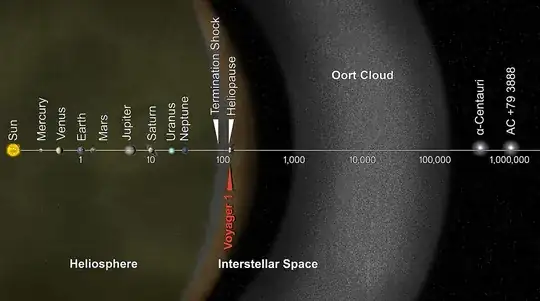It's a fair question!
How can Voyager 1 have left the Solar System if there are comets and other trans-Neptunian objects much further away, which orbit the Sun and which therefore are part of the Solar System?
Where does the Solar System end? is a start, but there is more going on here.
NASA says this because they define leaving the Solar System as TWO conditions being true at the same time:
- It has left the heliosphere and is now experiencing interstellar space. Before, Voyager was surrounded by cozy and familiar solar wind, but after passing through the bow shock the plasma particles around it now are interstellar in origin. It has left the harbor and is now out to sea.
- It is not gravitationally bound to the Sun. It is moving faster than escape velocity so it will never return.
There are indeed (probably) objects much farther than the Voyagers that are in interstellar space, but they are still well-bound to the Sun and part of our solar system for that reason.
It seems deceptive to me that they keep making this claim.
Hopefully it won't seem that way any longer. :-)

Source
